The Warsawers hate or love , but nobody really gets past it. With its 237 meters, the Warsaw Palace of Culture may not be the most beautiful, but it is still the second tallest building in Poland – even though one skyscraper after another is being built right next to it. In a way, the Palace of Culture was a “gift” of the Soviet dictator Josef Stalin to Poland and today, as then, there are countless museums, concert halls, cafés and even a swimming pool to discover.
No one has ever seen all 3000 rooms in their entirety. So it’s a good time to take a look at a few of them. And for just a few euros, you can take the elevator to the 30th floor in a flash and enjoy what is certainly the most beautiful view of Warsaw from a height of over 100 meters. So, come with us on a trip to perhaps the most unusual Warsaw sight.
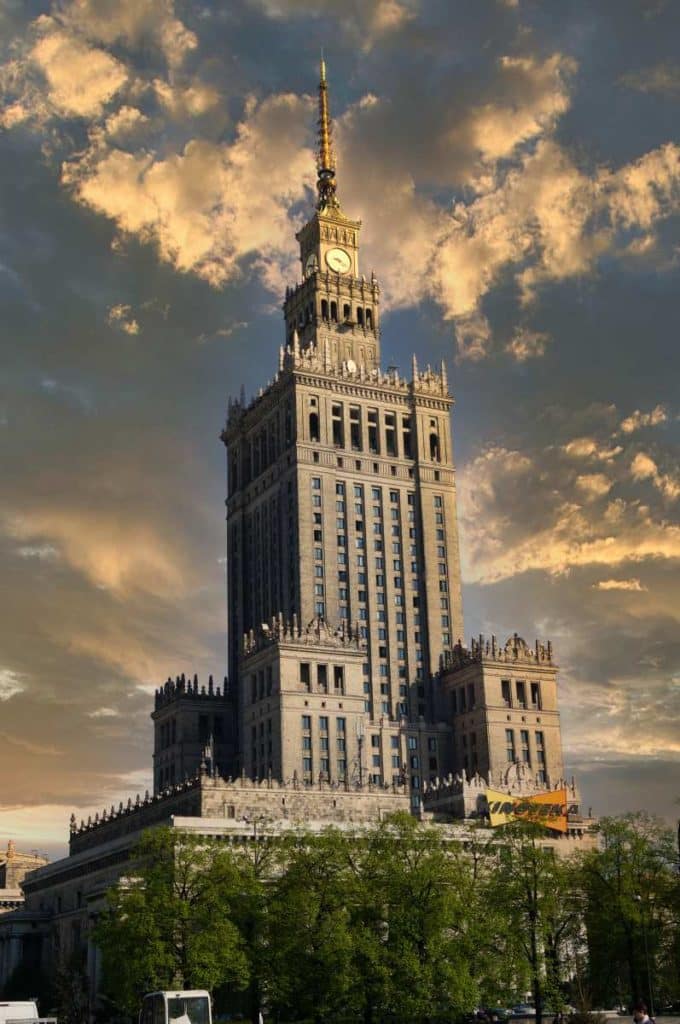
History of the Palace of Culture and Science
Risen from ruins
After the Second World War, Warsaw lay in ruins. After Polish insurgents had dared to fight courageously against the German occupiers, the city was literally razed to the ground in revenge. In some districts more than 97% of the buildings were destroyed! The destruction was so devastating that for a short time some politicians even considered moving the capital to Łódź and giving up Warsaw all together.
In a huge effort, however, the reconstruction of the city was soon started. And the new communist rulers of the so-called Peoples Republic of Poland immediately wanted to show where the journey in the new, ideal system was heading. This required large, magnificent buildings that would reflect the self-image of the new regime.
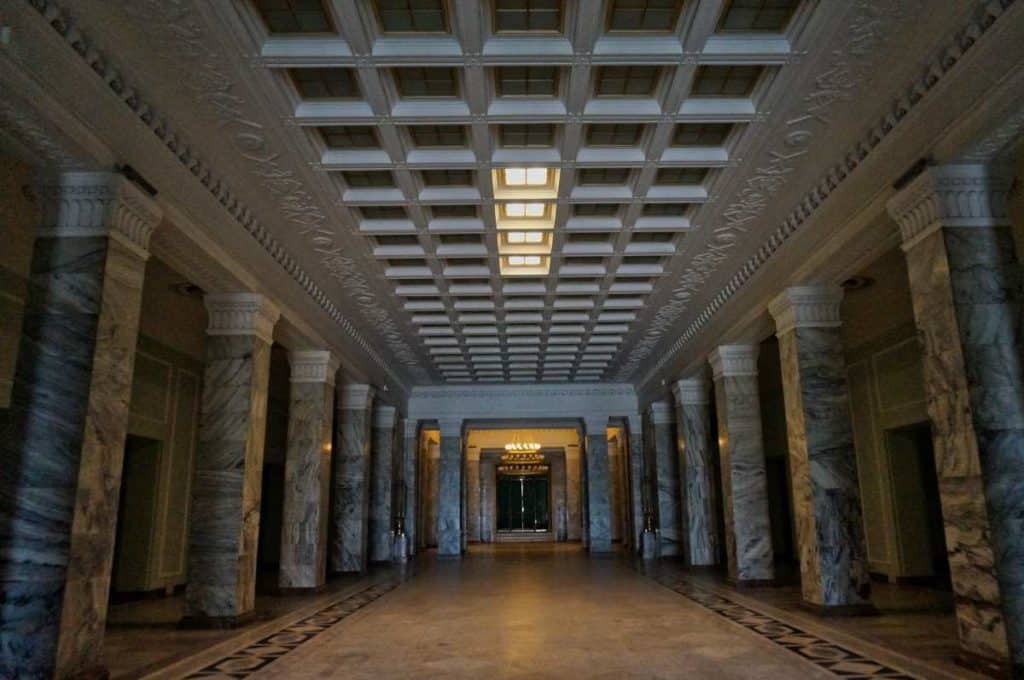
Old Building Traditions and Socialist Classicism
The renowned Soviet architect Lev Rudnev was commissioned to design a building that was to eclipse everything seen so far. Rudnev had already distinguished himself with several monumental buildings in the Soviet Union and with the main building of the Lomonosov University in Moscow he had also designed the tallest building in Europe at that time. Rudnev started with a trip through Poland and paid special visits to old cities like Krakow, Lublin and Zamość to get inspired.
Back in Warsaw, the work on the Palace of Culture began in 1952. It started exactly on Mayday, the important Labour Day in Communist societies. And there was enough work to be done: Within only three years, up to 10.000 people worked on the construction site, including several thousands from the Soviet Union itself. The official opening was scheduled for July 1955 and featured a massive ceremony. At that time the Palace of Culture was only 234 meters tall though. Today, it measures 237 meters (778 feet), thanks to an antenna from 1994 which sponsored it three extra meters (10 feet).
The most important building of Communist Poland
From then on, the Palace of Culture was the symbol of the new, socialist Poland. It was a mixture of administrative building, cultural and leisure temple and was initially called the Stalin Palace, or officially the “Josef Stalin Palace of Culture and Science”. After de-Stalinization, it was renamed the “Palace of Culture and Science” (“Pałac Kultury i Nauki” or “PKiN” for short). It still bears this name today.
From then on, party conferences, summit meetings with representatives of other communist states, but also sensational concerts like one of the Rolling Stones in 1967 took place here. It thus became the center of the country’s politics and culture. It is architecturally significant above all because, apart from a residential complex, it is the only completely preserved building in the style of Socialist Realism in Warsaw. Incidentally, the building used to be white, but due to air pollution the color has now given way to a lighter shade of brown.
The Palace of Culture and Science today
And what is left after all the work? Above all mockery. The Polish poet Władysław Broniewski once called the Palace of Culture a “nightmare of a drunken confectioner”. After the fall of the communist rule, suddenly no one wanted to have anything to do with the Palace of Culture. It stood symbolically like no other building in Poland for Communism and Stalinism of the early days of socialist Poland. Many wanted to remove it from the cityscape, and in 2007 there were still serious plans to tear it down. After the fall of the Berlin Wall, however, the building’s exterior has also changed. Since 2010, it has been bathed in a colorful sea of lights at night with LED lights depending on the occasion – an impressive spectacle!
In the meantime, the people of Warsaw have come to terms with it and have a kind of love-hate relationship with “their” Palace of Culture. Even if the symbol of socialism is still a thorn in the eyes of many, nobody really wants to miss the plentiful institutions in it. And even if more and more huge skyscrapers are being built around it – the Palace of Culture remains! We think that’s great because the Palace of Culture is simply a piece of Warsaw and is as much a part of the city as the Old Town or Łazienki Park.

Appearance and structure of the Palace of Culture and Science
No matter where you are in the center, you will hardly be able to overlook the Palace of Culture with its 237 meter tower. And when you stand in front of it, you will completely lose orientation. The main reason for this is that the central building of the Cultural Palace is the 237 meter skyscraper. This is framed on all four sides by large buildings and has an additional semicircular extension on its west side. I once walked around the Kulturpalast and it took me almost half an hour.
The Palace of Culture has many echoes of local building traditions, which are not so obvious to non-experts at first glance. Although he too followed the ideal of Socialist Classicism, the architect Rudnev was particularly impressed by the Renaissance buildings in southern Poland. He let these building traditions flow into his work. You can easily recognize this in the lower parts of the Palace of Culture, where elements of the Renaissance attics of southern Poland were taken.
Over 3000 rooms
The Palace of Culture has a total of 3288 rooms. They are distributed over 38 floors, which are connected by 33 elevators. The Palace of Culture is therefore something like a city within the city. There are museums, theaters, auditoriums, a huge congress hall with over 3000 seats, a gymnasium, a ballroom, a swimming pool with 500 seats – in short, everything!
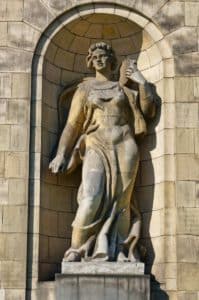
Art at the Palace of Culture and Science
However, the Palace of Culture is not only interesting from an architectural point of view, but also from an artistic one. At the top of the photos you can see how much marble was used here and how beautifully individual areas such as the staircases were designed. But there is even more to discover in and around the palace of culture. I especially like the statues on the east side, which represent ideals of art and science and thus symbolize the Warsaw Palace of Culture itself. Perhaps you will discover the most exciting statues during your visit? One of them holds a mini Palace of Culture in her hand, another one a book with the inscription “Marx, Engels, Lenin …”. The name Stalin was simply removed after the de-stalinization.
The most exciting places in and around the Palace of Culture and Science
In the Palace of Culture and Science you can definitely spend hours without getting bored. However, only a part of the building is open to tourists. We have summarized the most exciting places for you here.
Panoramic terrace
You can buy a ticket for just 20 zł (approx. 5 euros) at the counter at the east entrance to the Kulturpalast. It’s better to do this online beforehand, as the queues can often be long. After this you take the elevator to the viewing platform on the 30th floor at breathtaking speed. At a height of 114 meters, you have a fabulous view over the city. It’s one of the highlights of a visit to Warsaw, especially at sunset.
Congress Hall
Alongside the National Stadium in Praga, the hall in the Palace of Culture is the most important event venue in the whole of Warsaw. Major national and international artists perform here. Tickets for the events are available from the box office on the east side of the Warsaw Palace of Culture. Just drop by when you visit and ask which events are currently taking place, as tickets are often still available for the same day.
Incidentally, the congress hall was renovated in 2014. Two companies went bankrupt during the work and the press made fun of the fact that the palace was built in just three years, but it would take five years to renovate a single room.
Museum for the History of Evolution
As a Communist country, it was naturally important for Poland to spread the Theory of Evolution. Of course, it was also about weakening the church. Today, however, things are completely non-ideological. In the exciting museum in Warsaw’s Palace of Culture, you can learn about the history of the earth and even see real dinosaur skeletons!
Drama Theater
The Teatr Dramatyczny is the most famous in the city. You can see the best Polish actors on stage here. Although the main venue is not in the Warsaw Palace of Culture, there are often performances here too. If you prefer to experience experimental plays instead of classical dramas, then check out the Teatr Studio, which is also located in the Palace of Culture.
Lalka
The puppet theater in the Palace of Culture is aimed at children and young people and is a reflection of the rich puppetry tradition in Poland. So if you are traveling with children, you should definitely stop by here. And even if you don’t speak Polish, it’s no problem.
Around the Palace of Culture
There is already a lot going on in the building itself, but it is also worth taking a walk around it and not only let the building itself have an effect on you, but also discover adjacent places. To the north, for example, there is a small park.
Ice rink
In winter, an area of a good 1000 square meters (10700 square feet) on the east side of the Cultural Palace is converted into an ice rink! Do your laps here in a relaxed way with a view of the concrete giant!
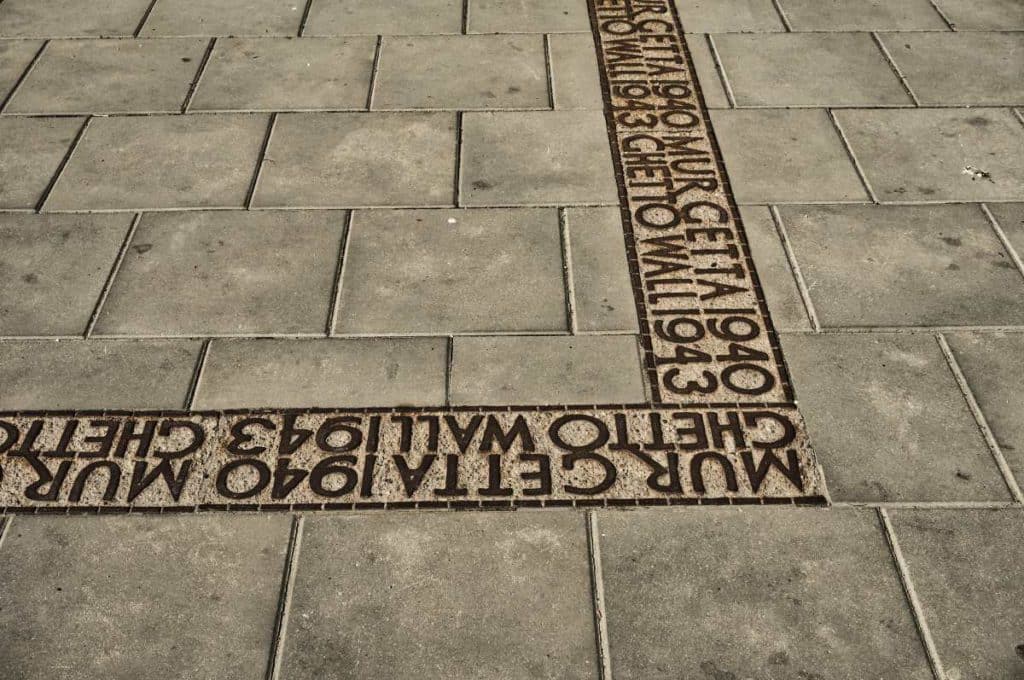
Former Warsaw Ghetto
The border of the Warsaw ghetto ran exactly where the Palace of Culture stands today. Markings in the ground, for example on the east side of the building, commemorate this place where the German Nazis committed some of their worst crimes. If you move to the area northwest of the building, you will come across a few remnants from that time, but you can also visit the famous Nożyk Synagogue from 1902, which miraculously survived the war.
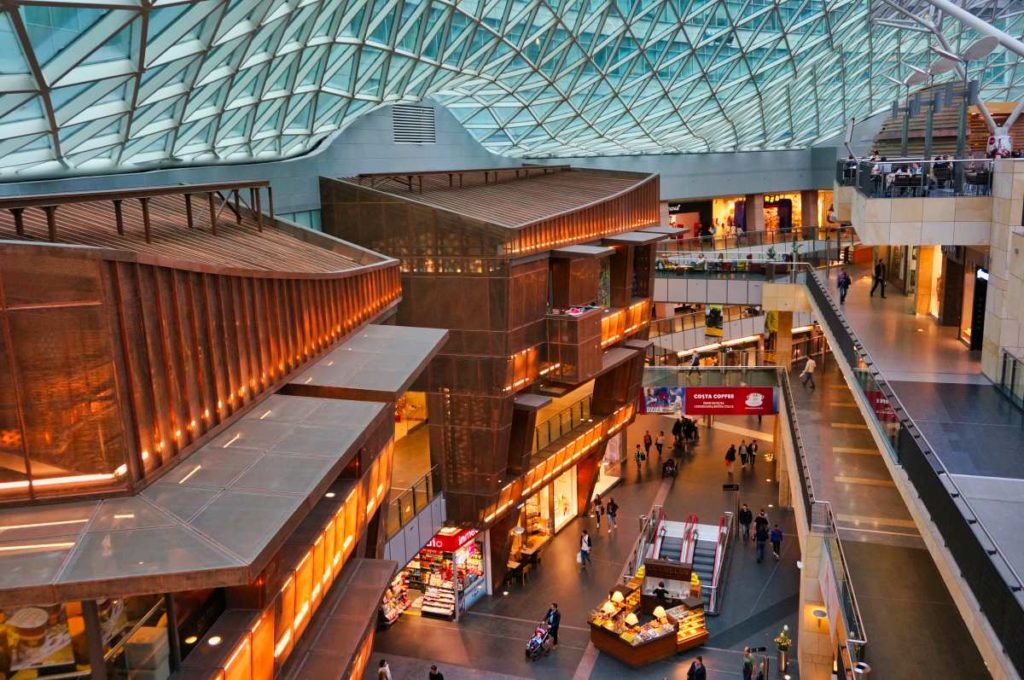
Golden Terraces
To the west of the Palace of Culture in Warsaw is the recently renovated central railway station, the most important in the city. A spectacular shopping center connected to the station rises in between. In the Golden Terraces (Złote Tarasy), you can shop til you drop, go to the cinema or visit one of the restaurants located here under the roof reminding of a wave.
Book recommendations
Want to find out more about Warsaw? Then order the CityTrip Warsaw, a travel guide published by Reise Know-How Verlag, which introduces you to the most beautiful places, the best restaurants and the nicest walks through Warsaw.
Still not had enough of Poland? Check out our Poland country page regularly, where we are always publishing new articles!


Hi Markus! Very nice post. I am interested in the statues around the base of the building. I read that one of them is Copernicus and another is Marie Curie. Do you know which they are? Thank you!